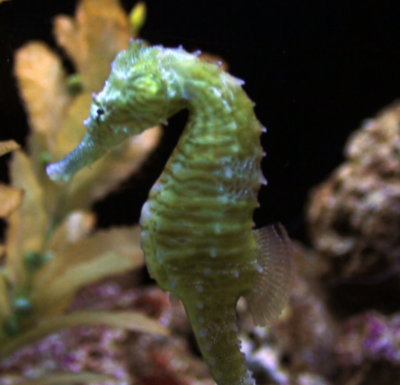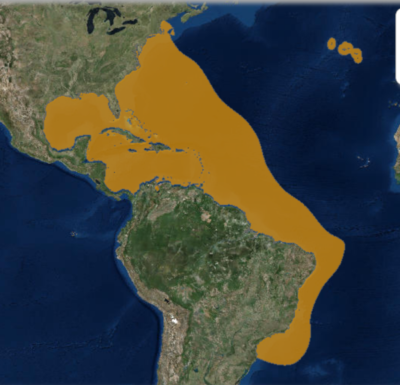 Today we return to Galveston, our Island to the south. Here among the sargassum and flotsam, we pull our nets, being sure to catch any wily fish that might slip free once we pull the mass from the water. Among the tangle is a strange plated fish with a horse-like face and a very prehensile tail clinging to the algae.
Today we return to Galveston, our Island to the south. Here among the sargassum and flotsam, we pull our nets, being sure to catch any wily fish that might slip free once we pull the mass from the water. Among the tangle is a strange plated fish with a horse-like face and a very prehensile tail clinging to the algae.
We have found our quarry, the Lined or Northern Seahorse (Hippocampus erectus).
These are large seahorse, reaching 7″ and are arguably one of the most forgiving. They are subtropical, and seem to do best below 74 degrees. Above 74, seems to cause bacterial issues and increase metabolism. These are lean fish, so having little body fat means requiring regular feedings a couple times a day. They have a fused jaw, so it functions more similar to a straw to suck up small mysid shrimp, brine shrimp, and tiny fry. They have limited mobility, but recent studies suggest a higher flow appears to increase health. Coloration is quite variable, along with Cirri (the hairlike extensions).
 Seahorses need hitches, things to grasp with their tail. Often these can be macroalgaes and eelgrass, but in a home tank plastic chain and even fake plants works quite well. Tankmates need to be chosen with extreme care, most will eat the food far faster then the slow seahorse. Stinging corals and anemones are best avoided as the seahorses might use them as hitches, stinging the seahorse accidentally. They breed readily in home aquariums, males hold the eggs and fry in a pouch.
Seahorses need hitches, things to grasp with their tail. Often these can be macroalgaes and eelgrass, but in a home tank plastic chain and even fake plants works quite well. Tankmates need to be chosen with extreme care, most will eat the food far faster then the slow seahorse. Stinging corals and anemones are best avoided as the seahorses might use them as hitches, stinging the seahorse accidentally. They breed readily in home aquariums, males hold the eggs and fry in a pouch.
These are iconic fish that are often desired, but aquarists must commit to very dedicated water changes, daily feedings, and highlight them as the focus of the tank. They are difficult, but not impossible.
by Roy Williams
 Biotope One A Study of Flora and Fauna
Biotope One A Study of Flora and Fauna 


